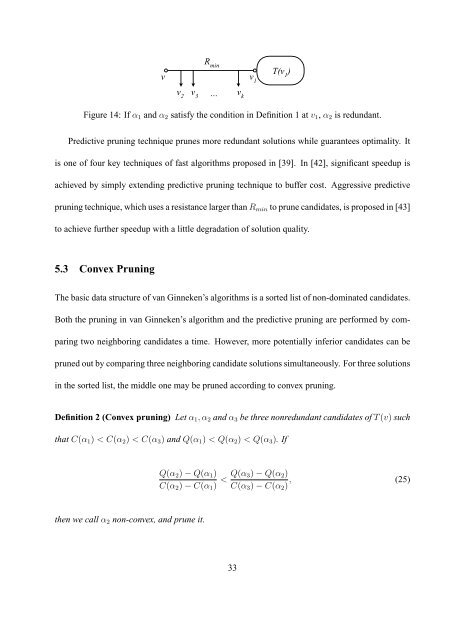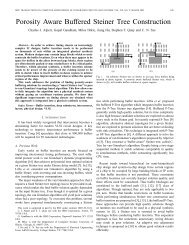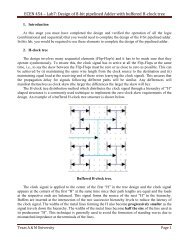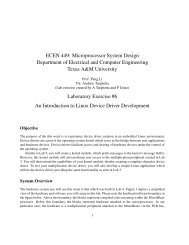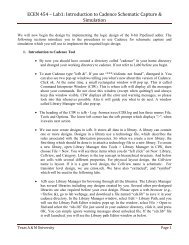Buffer Insertion Basics - Computer Engineering & Systems Group ...
Buffer Insertion Basics - Computer Engineering & Systems Group ...
Buffer Insertion Basics - Computer Engineering & Systems Group ...
You also want an ePaper? Increase the reach of your titles
YUMPU automatically turns print PDFs into web optimized ePapers that Google loves.
v<br />
R min<br />
v 2<br />
v 3 ... v k<br />
v 1<br />
T(v 1<br />
)<br />
Figure 14: If α 1 and α 2 satisfy the condition in Definition 1 at v 1 , α 2 is redundant.<br />
Predictive pruning technique prunes more redundant solutions while guarantees optimality. It<br />
is one of four key techniques of fast algorithms proposed in [39]. In [42], significant speedup is<br />
achieved by simply extending predictive pruning technique to buffer cost. Aggressive predictive<br />
pruning technique, which uses a resistance larger than R min to prune candidates, is proposed in [43]<br />
to achieve further speedup with a little degradation of solution quality.<br />
5.3 Convex Pruning<br />
The basic data structure of van Ginneken’s algorithms is a sorted list of non-dominated candidates.<br />
Both the pruning in van Ginneken’s algorithm and the predictive pruning are performed by comparing<br />
two neighboring candidates a time. However, more potentially inferior candidates can be<br />
pruned out by comparing three neighboring candidate solutions simultaneously. For three solutions<br />
in the sorted list, the middle one may be pruned according to convex pruning.<br />
Definition 2 (Convex pruning) Let α 1 ,α 2 and α 3 be three nonredundant candidates of T(v) such<br />
that C(α 1 ) < C(α 2 ) < C(α 3 ) and Q(α 1 ) < Q(α 2 ) < Q(α 3 ). If<br />
Q(α 2 ) − Q(α 1 )<br />
C(α 2 ) − C(α 1 ) < Q(α 3) − Q(α 2 )<br />
C(α 3 ) − C(α 2 ) , (25)<br />
then we call α 2 non-convex, and prune it.<br />
33


